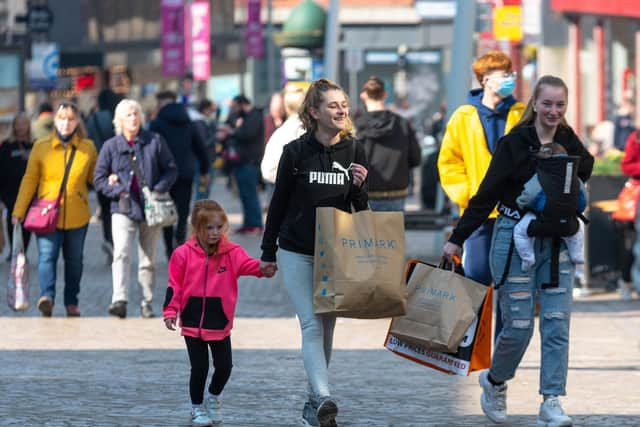Blackpool leads on visitor spending as Preston is still behind pre-Covid levels
and live on Freeview channel 276
New figures show that spending in North West towns and cities has bounced back and now exceeds pre-pandemic levels in almost half of the key regional centres.
However footfall remains low, which could indicate signs of a more challenging long-term trend, according to analysis by the insolvency and restructuring trade body R3.
Advertisement
Hide AdAdvertisement
Hide AdThe figures from the Centre for Cities, which cover the last week in June, show that Blackpool had the best recovery of anywhere in the country, with spending at 144 per cent of pre-pandemic levels even though footfall was only 77 per cent of previous levels.


Weekend spending there was marginally up on pre-coronavirus levels at 102 per cent, while night time spend was 65 per cent.
Preston saw its footfall at 61 per cent of pre-Covid levels with spending at 87 per cent of what it used to be before the lockdowns. Weekend spending was 72 per cent and night time was 49 per cent.
A similar pattern was seen in other locations.
Spending was at or above pre-pandemic levels in Blackburn (106 per cent of previous levels) Liverpool (105 per cent), Burnley (102 per cent) and Warrington (100 per cent) and approaching previous levels in Birkenhead (97 per cent), Wigan (94 per cent) and Preston (87 per cent). However Manchester continued to lag behind, with spending at 83 per cent of previous levels and footfall at just 41 per cent.


Advertisement
Hide AdAdvertisement
Hide AdAllan Cadman, North West chairman of R3 and a partner at Poppleton & Appleby, said: “Spending in town and city centres has recovered strongly since non-essential shops re-opened in April, despite footfall remaining low and some well-known names having closed. The figures could reflect a number of underlying factors.
“The absence of office workers may have had less impact than expected as they tend to spend less than other visitors. Town centres may have benefited from more domestic trade as people have stayed in the UK.
"And even though some of the bigger stores have closed, it suggests that more is being spent in independents or in restaurants and bars. Certainly it bodes well for the future of high streets.
“However, the question is whether footfall will ever return to previous levels. With many companies moving to a hybrid model with staff working at home part time, it is likely there will be fewer office workers around and businesses which rely on their trade may struggle.
Advertisement
Hide AdAdvertisement
Hide Ad"Meanwhile the wider changes taking place – in terms of different spending patterns and visitor types – could force many others to rethink their model.
“After a long and difficult period, retail and hospitality sectors will have been hoping to get back to normal but are now having to navigate an uncertain landscape.
"It is important they stay tuned to trends in the market, monitor cashflow carefully and be ready to adapt or restructure their operations. Businesses that are facing financial distress should seek advice as soon as the signs of it show themselves.”
Blackpool Gazette: Thanks for reading. If you value what we do and are able to support us, then a digital subscription is just £1 for your first month. Try us today by clicking here